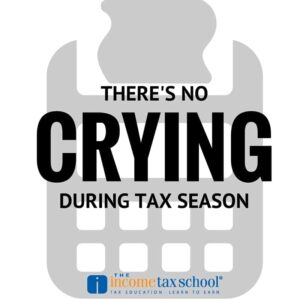Tax season goes down the same way every year: crickets in January, flocks in March and April. As much as we encourage clients to come in early for their tax preparation appointments, the reality is that the number of returns we prepare increases the closer we get to the April 15th deadline.
as we encourage clients to come in early for their tax preparation appointments, the reality is that the number of returns we prepare increases the closer we get to the April 15th deadline.
As a tax professional, you shouldn’t really be thinking about how you can “save time”. Being a competent preparer means focusing on preparing the most accurate tax return possible while legitimately minimizing your client’s tax liability for the current and future years. You also want your clients to leave your office with the feeling of satisfaction and trust in the work you’ve completed for them so that they come back next year!
That being said, there are only 24 hours in the day. So how do you balance an increase in work while making sure you spend time with clients, and prepare accurate returns? By being as efficient as possible. Here are some tips from our seasoned tax preparers on how to be more efficient as a tax preparer.
- Organize your office before tax season (or ASAP if you haven’t done so already).
- Make sure you have the supplies necessary to get through the tax season.
- Download references such as IRS Publications and Instructions as early as possible, for easy access.
- Send your clients a tax organizer (by email or mail) at the end of December or in early January. This serves are a reminder of the information they should bring to their tax appointment.
- Take time to educate new clients on the types of information needed to complete their returns and explain why it is necessary.
- Conduct thorough interviews during the initial meeting with the client. Make sure you get phone numbers and email addresses so you can quickly ask additional questions or address tax issues, which may arise.
- Tax returns should be prepared in a timely fashion instead of allowing them to pile up. Rushing through to get them done causes errors. Clients become frustrated when the preparation of their tax return is unnecessarily delayed.
- Provide a checklist of information that may be needed for a tax appointment. Having the checklist printed on the client envelope (which contains their copy of the tax return and original documents) provides quick and easy access to the list for next year’s tax return.
- Make sure all returns are double-checked (ideally by someone other than yourself) to prevent extra-time and client dissatisfaction resulting from corrections or amendments.
- Use dual monitors to enable multi-tasking during the tax preparation process.
- Have a list of all key contact information (names, titles, phone numbers and URLs) readily available so you are not searching for that information when needed. Examples include contacts for IRS & State, Tax Support, tax software support, IT Desktop Support, etc.
- Communicate with your staff (and they with each other) as often as possible to keep up with things going on in the industry. For instance, if there is a new problem with the software you use or a problem that is causing e-filing rejections, you can save time for everyone by making sure that they are aware of any issues.
- Register to receive the IRS Guidewire email and other email notifications that are available from your state tax departments. Share these with your staff as well.
But wait, there’s one more! Implementing a tax office policies and procedures manual will provide systematic operating methods which will greatly increase efficiency and productivity. Developing your own policies & procedures manual can be time consuming and tedious. The good news is, you don’t have to reinvent the wheel. The Income Tax School has easy solution, our Tax Office Operation Manual.
More Great Reads
4 Midseason Outreach Promotions
